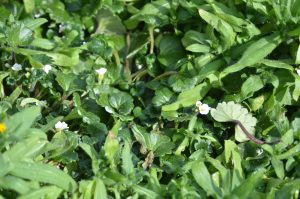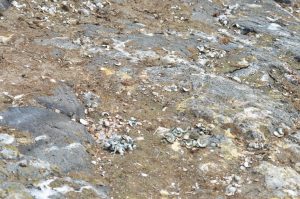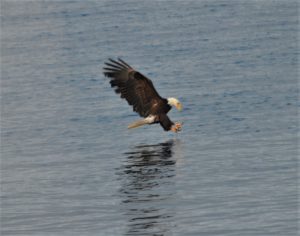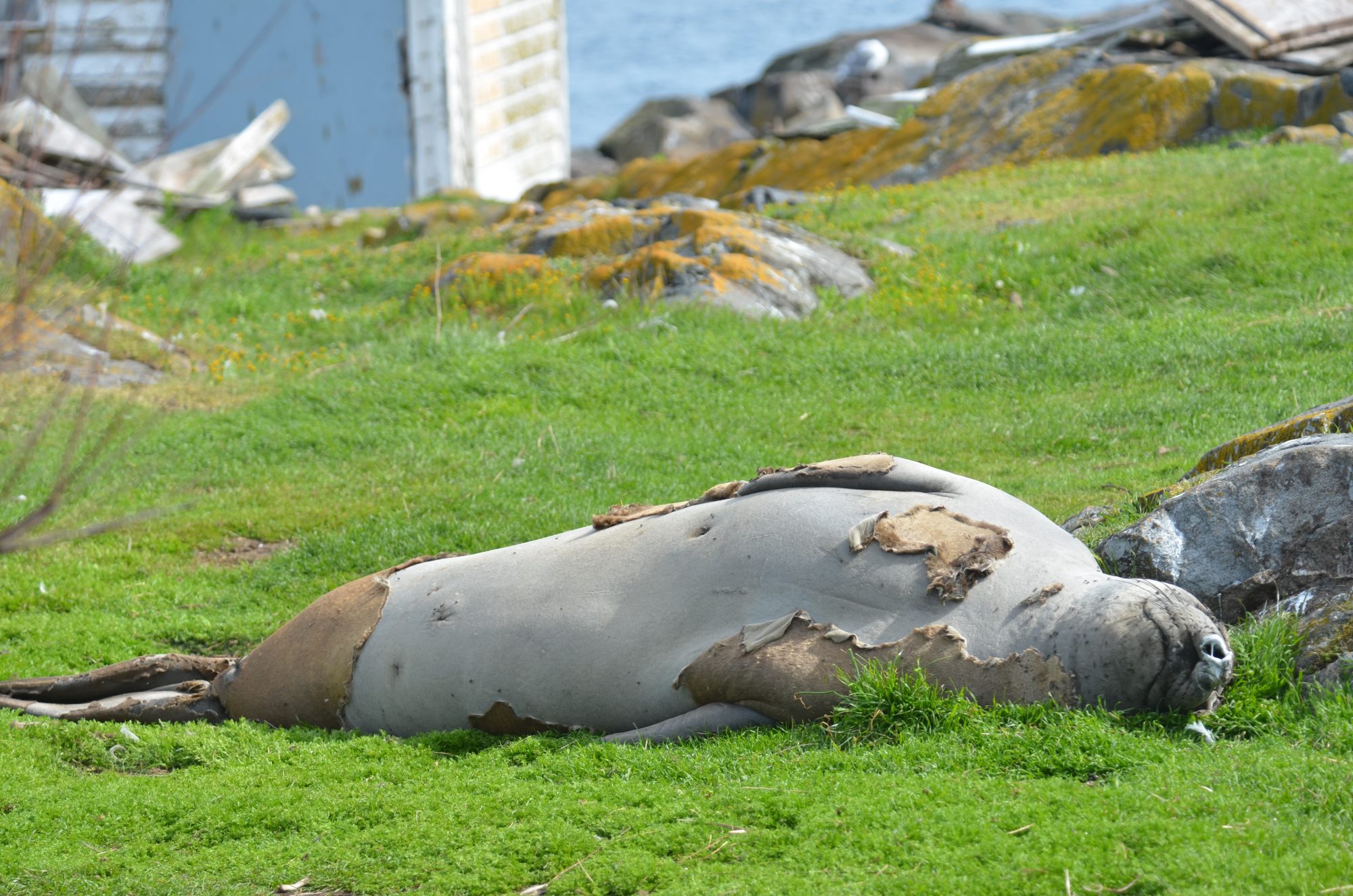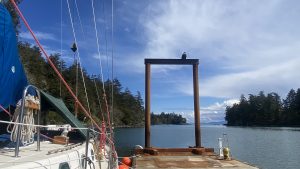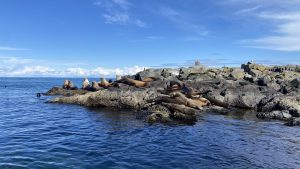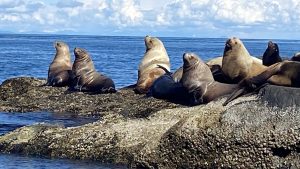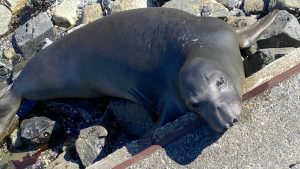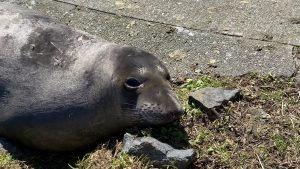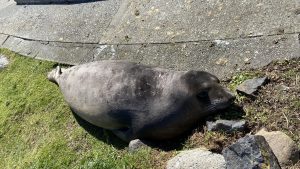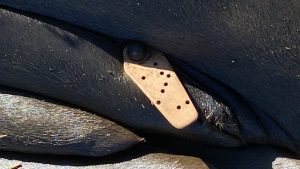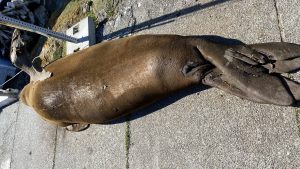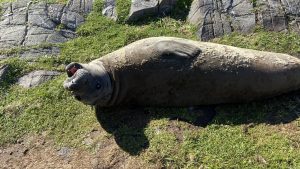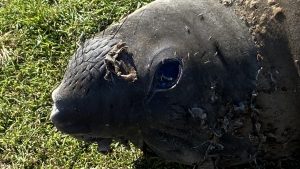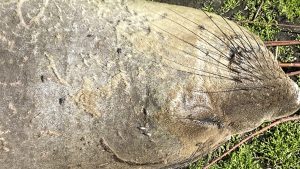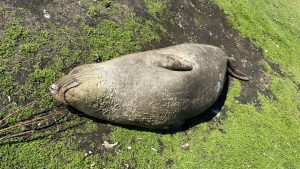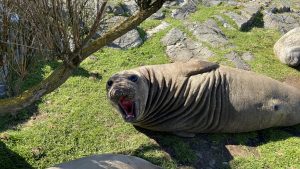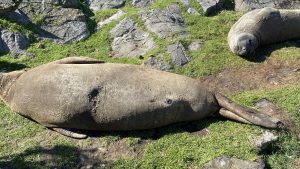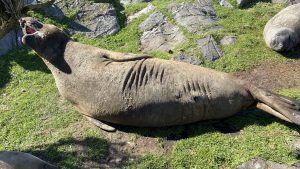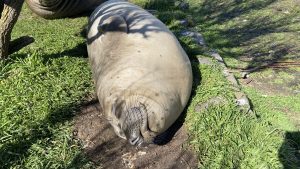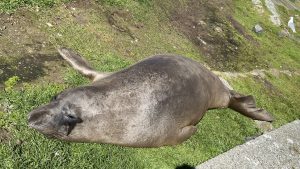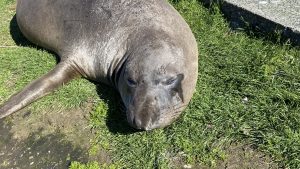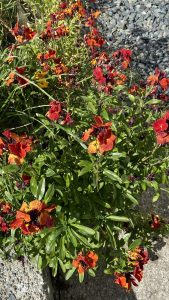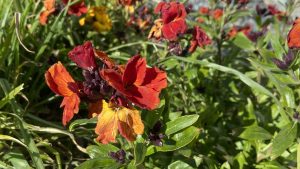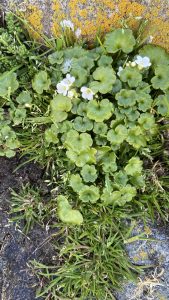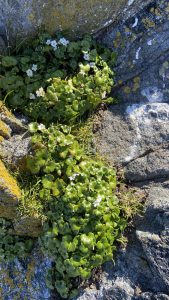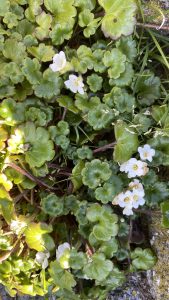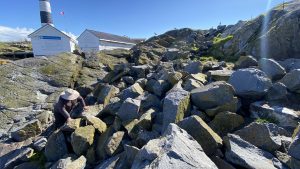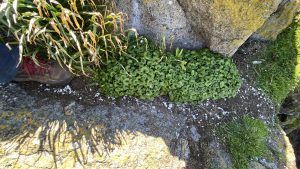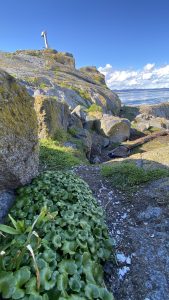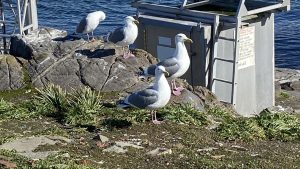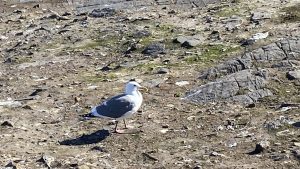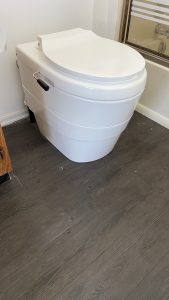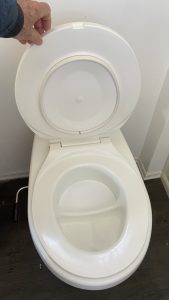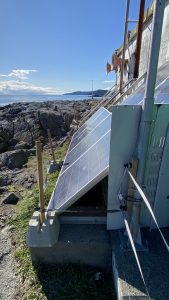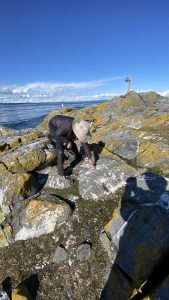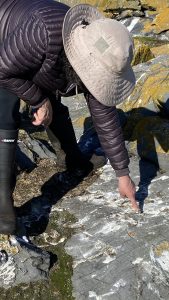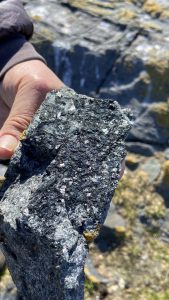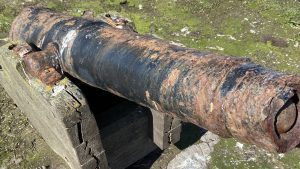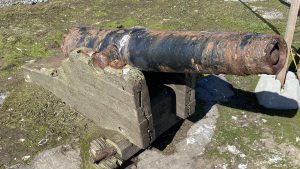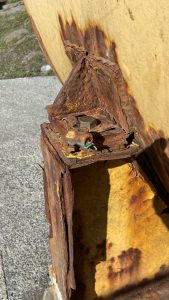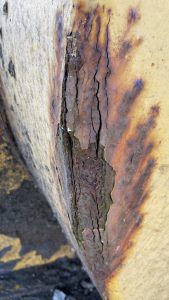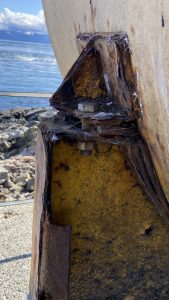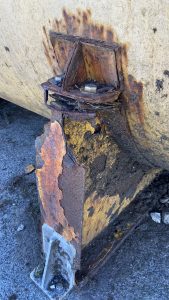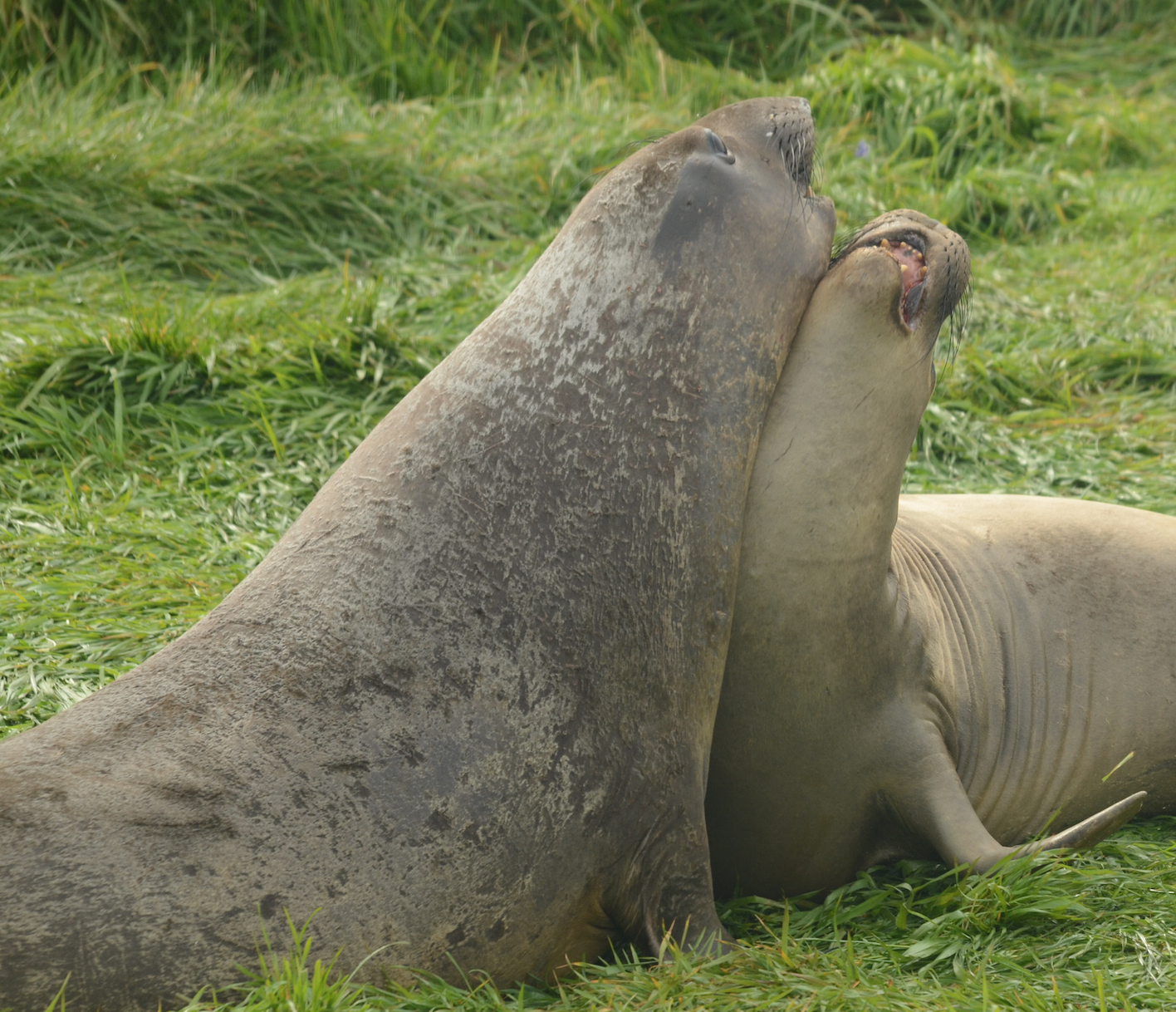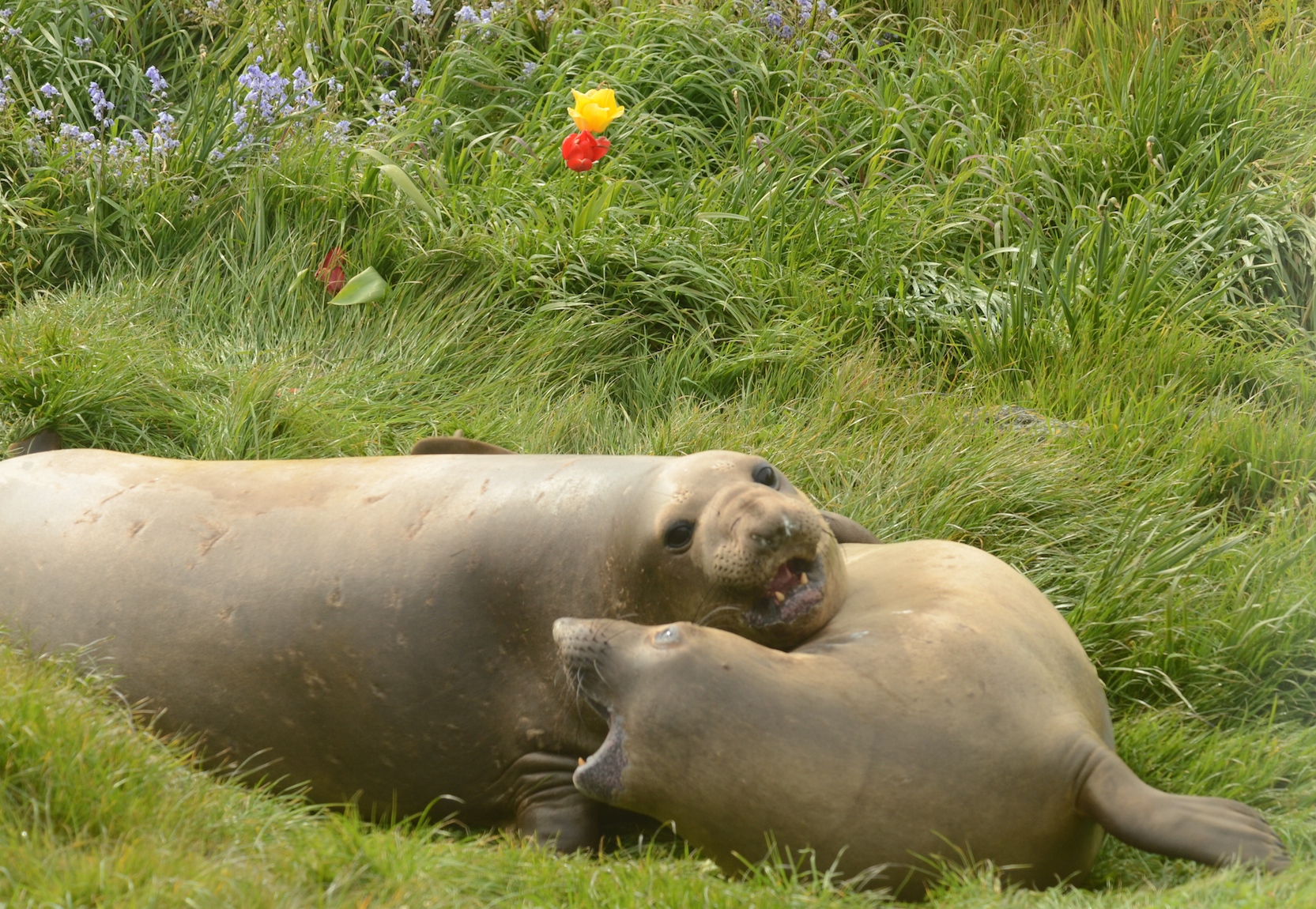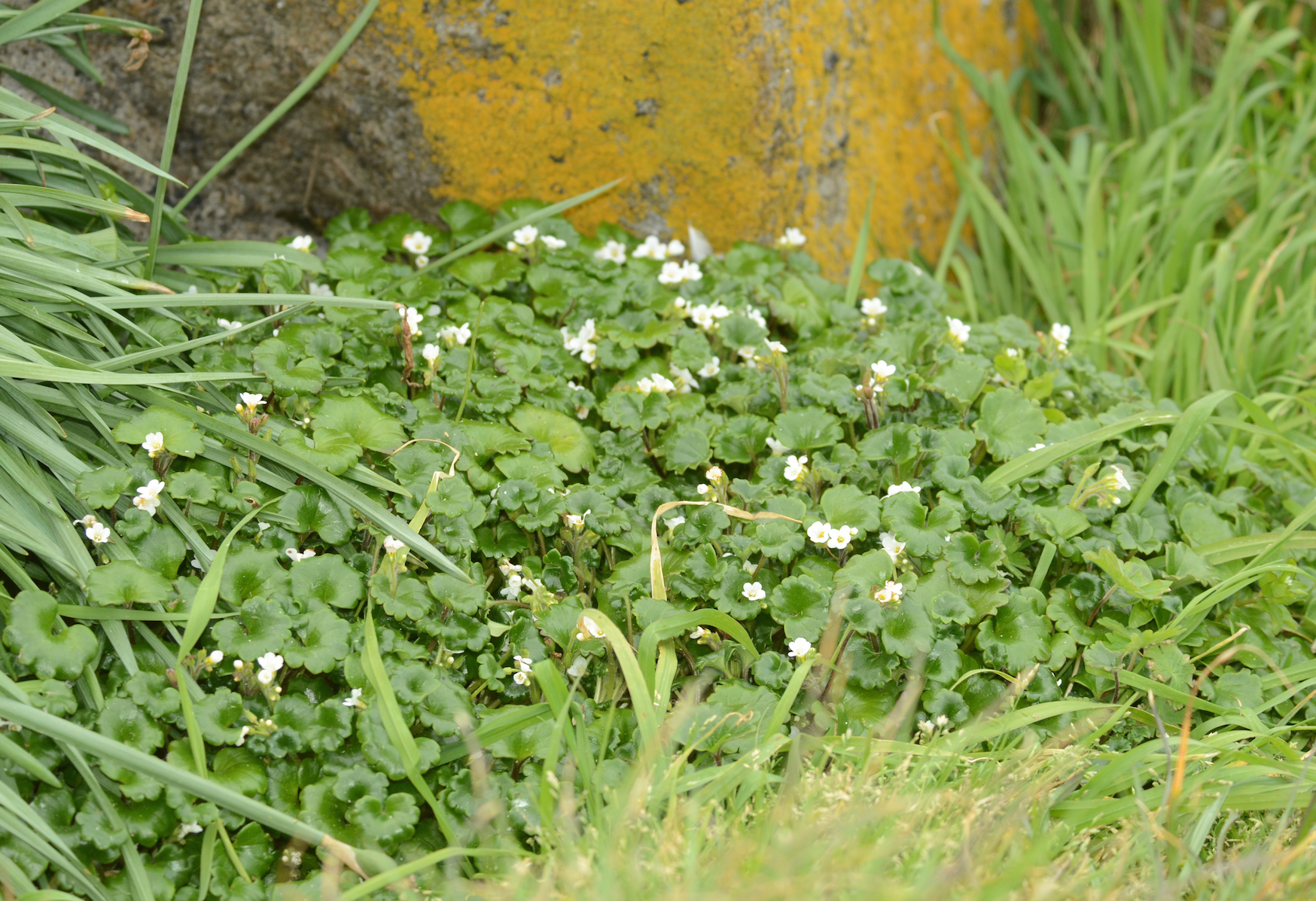This morning the wind was less than 10 knots and it was a beautiful time to be outside compared with the howling winds the last couple of days. It is from the west and increasing as the day goes on.
Often people ask me why I come to Race Rocks and this morning was a great reminder. As I cleaned the solar panels there was a soft west wind, the sun was in and out of the clouds as it rose in the east. Two California sealions were catching fish and shaking them as they surfaced. An eagle flew over and picked up a fish only to be chased ashore by two glaucous wing gulls. There are moments here when one is called to be present. There are many moments of frustration ( the electric fence is down again) and occasional fear (the wind, the geese) and boredom but then there are moments when one just doesn’t want to be anywhere else. And how often that does that happen in one’s life?
Visitors:
- Pearson College had about 6 divers in Race Channel today but did not come ashore.
- Just after noon now and 10 ecotourism boats have passed by
Observations:
- Mist Maiden (Romanzoffia tracyi) is blooming!
- I took a picture of the chiton shells and will post below. When walking around there are so many things that are taken for granted. Like the hundreds (thousands) of chiton shells. I suppose they are a stable food source. Has it always fed these birds? Did there used to be more fish skeletons? Sometimes it is good to record the obvious.
Work:
- Cleaned the solar panels this morning
- continued wheelbarrowing wood to house
- cleaned out the wood stove
- cleaning the house for Jill’s return
- whimbrel
- Romanzoffia tracyi
- Chiton shells
- Success!


